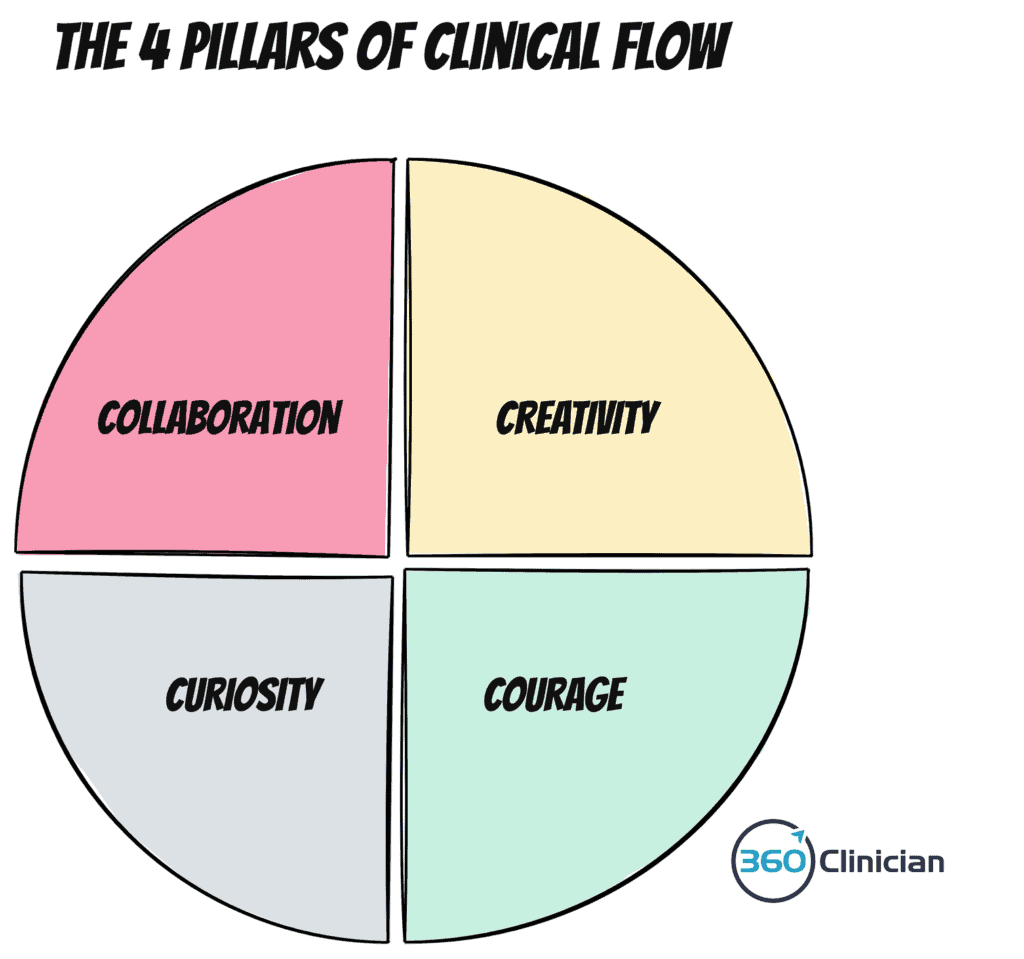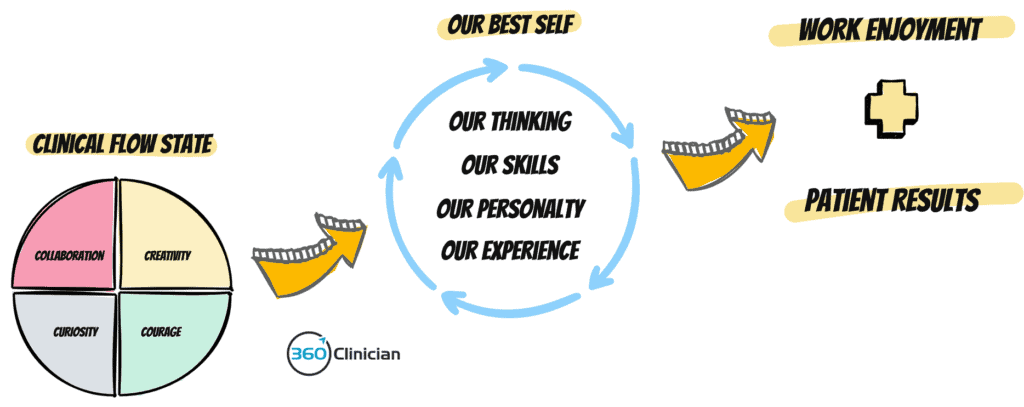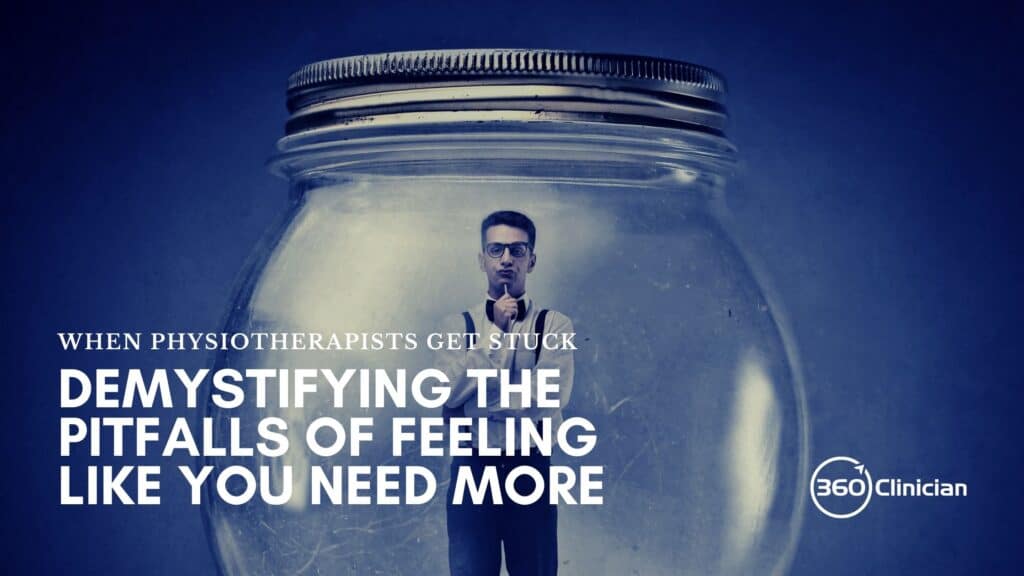Clinical flow. It’s a topic infused in everything I have written about.
But sometimes it can feel a little fuzzy as to what it means.
Today I dive into the concept of “clinical flow”.
I believe that every clinician should improve their capacity to operate in a flow state. In my view, the ability to operate in a place of clinical flow may be the most important aspect of developing as a clinician. In this blog post, I explain why.
What does ‘flow’ actually mean?
Being in ‘flow’ is a concept first articulated by psychologist Mihaly Csikszentmihalyi. It is where a person is highly engaged and focused while doing an activity. While the flow state is often associated with athletic or artistic endeavours, it can also occur in work settings.
And I believe we can experience it in clinical work as well.
At first glance, the concept of flow seems unattainable in a clinical setting, or at the very least unsustainable. The constant demands of a clinical day, moving from patient to patient, can make the concept of flow seem almost laughable.
It feels nebulous and ethereal.
It can even feel hokey.
Since it feels unrealistic or unattainable we tell ourselves that flow doesn’t matter. We shift our focus to skill acquisition. We focus on hard skills that feel more tangible and measurable. And at nearly every turn in our career, the pursuit of hard skills can seem to be the only thing that matters to getting better clinical results and improving our professional journey.
Why am I focusing on pursuing flow when it is hard skills that seem to be all that matter to improving our clinical results?
Because focusing our attention on flow, and the necessary ingredients needed for moving into a place of flow, sets us up as clinicians for a lifetime of highly engaged work that enables us to consistently experience meaning and joy in our work. And when we experience deep meaning and joy in our work, there is nothing that can stop us from fully realizing our unique potential as healers with the people we serve.
I believe that flow, and more specifically clinical flow is what we need to draw our attention to if we’re serious about professional growth and enjoyment.
It’s time to define Clinical Flow.
I believe that the concept of flow needs to be refined within a clinical setting as we need to acknowledge the inherent constraints, such as time, that exist within a clinical context.
I define Clinical Flow as a state of persistent psychological engagement – an energized focus that is embodied with the values of curiosity, collaboration, creativity and courage. It is where our attention can be leveraged to be fully present in our patient/client interactions in delivering high-quality care within the bounds of our knowledge, skills, and abilities.
I believe it is in this place that we experience meaning and joy in our work. It is a place where our ego-protective defences are held at bay so that we are fully engaged in the patient interaction. It is in this place where we operate best as healers.
And I don’t think that this experience is something that is fleeting or haphazard at best. I believe that clinical flow can be sustained by having the right work environment, an optimized state of self, and a flexible learning process that supports growth and development.
I believe that there are four pillars foundational to the clinical flow state. They are curiosity, courage, collaboration and creativity.

At the foundation is Courage. Courage may not seem to be something necessary for clinical flow. But as I’ve reflected on this topic, I’ve realized that courage is needed to advance in all other elements of clinical flow. We need courage within ourselves and we need courage with our patients.
The next element needed to support a flow state is Curiosity. After courage, curiosity is the bedrock for nurturing clinical flow. Why? Because curiosity fosters engaged openness. It helps us to move beyond our perceptual blinders.
Collaboration is at the core of the patient-therapist relationship. It is open-handed interaction that focuses on working together. I believe that collaboration has an understanding of humility. It is not a top-down power hierarchy, but instead one of joint decision-making and journey-making.
Finally, we have Creativity. When we deal with complex problems and situations, we need to be creative. As I’ve written before we need clinical agility. We need to be able to bring novel solutions to complex situations.
So how does this focus on clinical flow actually help me be a better clinician?
When we can consistently enter a place of clinical flow in our patient interactions, we are in the best position to maximize our skills, thinking, personality, and experience for that unique patient interaction. We create the opportunity to bring our best selves forward and deliver the best clinical experience.



